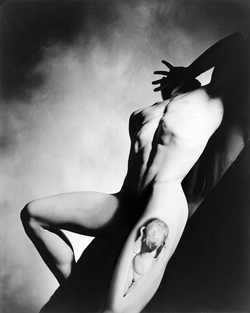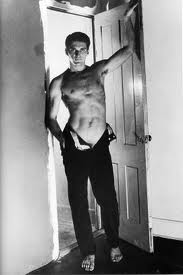|
|
||
|
Pro Tools
FILMFESTIVALS | 24/7 world wide coverageWelcome ! Enjoy the best of both worlds: Film & Festival News, exploring the best of the film festivals community. Launched in 1995, relentlessly connecting films to festivals, documenting and promoting festivals worldwide. Working on an upgrade soon. For collaboration, editorial contributions, or publicity, please send us an email here. User login |
WE WANT MILES: Miles Davis Versus Jazz
Jazz is one of the only art forms that originated in America, although it can be argued that its influences and popularity are great overseas than in the country of its origin. For years, jazz artists who were treated poorly in their own country (spurned by the recording industry’s mainstream and and physically prevented from enjoying their success by the draconian Jim Crow laws that limited where they could eat, sleep and recreate), found creative and inspirational solace in other places. In France in particular, and Europe in general, the jazz gods and goddesses were given their due and venerated as artists of the first order.
Therefore, it is not surprising that a recently published book on the great jazz trumpeter and composer Miles Davis originated from an exhibition last year at Paris’ Cite de la Musique. The French still keep the flame of “le jazz hot” and “le jazz cool” alive in an embrace that is not mirrored on these shores. WE WANT MILES: Miles Davis Versus Jazz published by Rizzoli in collaboration with Skira, is a reflection of the reverence given to jazz in general, and Miles Davis in particular. It is telling that the only North American exhibition on this musical legend has been presented at the Montreal Museum of Fine Arts (where it just ended its run after a record-breaking attendance). In this, the French (and by extension, the French Canadians) have much to tell us about the jazz giant who walked amongst us and who influenced our culture to this day. For information on this publication, visit the Rizzoli USA website: http://www.rizzoliusa.com/catalog/display.pperl?isbn=9780847835287
First off, let me say that this is one gorgeous book…..with beautifully rendered archival photographs that capture Davis’ mastery of his instrument and his riveting on-stage presence. The book also includes an eye-filling pastiche of album cover art which was carefully chosen by both Davis and his producers to visually represent the essence of the music contained in its album jacket (oh 33 1/3 albums…..how we miss you). Added for good measure are reproductions of artworks that were influenced by the Davis charisma and sound, particularly the works of Jean-Michel Basquiat, the New York “street artist” who counted Davis and his contemporaries as his personal heroes and artistic inspirations. The influence of jazz on American painters from the 1950s to the present is made clear and the interplay between jazz and fine artists has been a long and ennobling embrace.
When Davis began his career as a trumpet sideman in local jazz bands, jazz was popular as dance music, as exemplified by the big band era of Benny Goodman, Artie Shaw and Glen Miller. Davis (and his be bop compatriots) made the music one to listen to, not just dance to, which in itself was a major revolution. Davis’ producers coined the term “cool jazz” to describe the slightly detached and evocative resonances in the music, in particular the improvisational solos that became the highlights of the recordings of that period.
The text by Vincent Bessieres and Franck Bergerot is astonishingly complete, tracing Davis’ middle-class background in St. Louis, his early apprenticeship working with hometown jazz orchestras, his move to New York City (jazz central) where he was inspired by such innovators as Lester Young, Charlie Parker and Dizzie Gillespie and his experimentation (and mastery) of the improvisational style that became known as “be bop”. In those years of the middle and late 1940s, Davis took popular standards and massaged them in a mix of atonal and rhythmic explorations, breaking down the songs into spheres in much the same way that Cubist painters offered a multi-dimension view of the same object in space. The classic album BIRTH OF THE COOL was the purest example of the Davis style….a mix of be bop virtuosity with a laid back sound and phrasing that became his signature.
At the center of this new development, Davis mentored a new generation of jazz musicians who became legends in their own right, including such legendary masters as John Coltrane, Cannonball Adderley, Herbie Hancock, Wayne Shorter, Red Garland, Paul Chambers and Bill Evans. While all roads seemed to lead to Davis, this tome makes it clear that Davis was a difficult man to work with and for. He was a demanding perfectionist who insisted on multiple takes and long studio recording sessions that took weeks or months to complete. On a personal level, Davis cultivated his lauded position as frontman to become jazz music’s equivalent of a rock superstar, with all the ego, hubris and schadenfreude that is implied in that term. In short, Davis was a diva, and the turnover of musicians in his groups was legendary. Whatever gifts they received from Davis the artist, they also eventually burned out on Davis the legend.
And what makes a legend? The book posits the idea that Davis’ contribution to transform feel-good jazz was just the first of a long legacy of innovation. After his landmark work in the 1940s, he remained a prime mover and an innovator. In the 1950s, in classic collaborations with producer/arranger Gil Evans, Davis went orchestral…..adding symphonic arrangements to an adaptation of a George Gershwin operetta (PORGY AND BESS), a meditation on Spanish music (SKETCHES OF SPAIN) and several other milestone recordings of the 1950s and early 1960s. He also scored a significant following with his original score for French director Louis Malle's film debut, the nouvelle vague classic ELEVATOR TO THE GALLOWS (1957).
By the mid-1960s, when jazz’s mainstream appeal was waning due to the proliferation of rock n roll and the (to some) off-putting dissonance of “free jazz”, Davis was the first jazz artist to freely incorporate rock music into his recordings. Working with such jazz futurists as guitarists John McLaughlin and John Scofield, electric pianists Chick Corea and Joe Zawinul and saxophonist Wayne Shorter, Davis produced IN A SILENT WAY, a milestone recording that was a prescient mix of rock, jazz and what would soon be dubbed “new age” music. The innovations continued into the 1970s, when Davis shocked many of his longtime fans by incorporating urban funk into his music, creating a “ghetto” sound that corresponded to his awakening as a politicized black activist. By the 1980s, the last decade of his recorded work, Davis was again pioneering a sound that would be known as “space jazz”, with his solos gliding into the stratosphere before returning to the main chorus.
The book breaks down these developments into separate chapters, each reflecting the musical style of the decade and Davis’ equally expansive fashion sensibility that makes the photographs of him in concert visually arresting. As opposed to his contemporaries who continued to play in the same style that made them famous, Davis always challenged his fans with a new sound that reflected the energy of the times and the language of the moment. The changes in his musical stylings were also reflected in the album covers that he commissioned, which are beautifully reproduced. The graphic arts were once as important to a record album as what came between the sleeves and the book brings those styles to vivid pictorial life. From the film noirish covers of the early albums to the pscyhedlic iimagery of the 1960s and the "street art" culture of the 1970s and the 1980s, this book makes clear the close relationship between the arts exemplified by the Davis mystique.
Although he did write an autobiography and this book contains many revealing anecdotes (both flattering and not), Davis was at his core a very private person. No story, no photo and no written tribute (no matter how well written and organized) communicated the man’s contradictions and essence. For that, one needed to listen to his music, which revealed his temperament and his world view in a way that transcends the written word. Luckily, we have many recordings to access to get the full measure of the man and the artist. But this beautifully rendered book is a grand accompaniment to understanding and appreciating a music legend and cultural pioneer whose influence transcended jazz and music in general. His is a legacy to savor and continually to rediscover……it is all there in the music. If you want a sample of his genius, log on to: http://www.jukebo.com/#/miles-davis/music-clip,someday-my-prince-will-come,qssqxl.html
Sandy Mandelberger, The Printed Page Editor
09.09.2010 | The Printed Page's blog Cat. : America Artie Shaw Artist Bebop Benny Goodman Bill Evans Bill Evans BIRTH OF THE COOL Cannonball Adderley Charlie Parker Charlie Parker Chick Corea composer Contact Details Director Dizzie Gillespie editor energy Entertainment Entertainment Europe France Franck Bergerot Free jazz Gershwin Gil Evans Glen Miller Herbie Hancock Herbie Hancock html http://www.jukebo.com/#/miles-davis/music-clip http://www.rizzoliusa.com/catalog/display.pperl?isbn=9780847835287 Human Interest Human Interest Jazz Jazz fusion Jean-Michel Basquiat Jim Crow Joe Zawinul John Coltrane John McLaughlin John McLaughlin John Scofield John Scofield Lester Young Louis Malle Miles Davis Miles Davis Miles Davis Montréal Montreal Museum of Fine Arts New York New York City Paris Paul Chambers Person Career Prince Private Producer Red Garland Red Garland Sandy Mandelberger Saxophonist Social Issues Social Issues St. Louis street artist Technology Technology The Printed Page the reverence Vincent Bessieres Wayne Shorter Wayne Shorter WE WANT MILES PEOPLE
|
LinksThe Bulletin Board > The Bulletin Board Blog Following News Interview with IFTA Chairman (AFM)
Interview with Cannes Marche du Film Director
Filmfestivals.com dailies live coverage from > Live from India
Useful links for the indies: > Big files transfer
+ SUBSCRIBE to the weekly Newsletter Deals+ Special offers and discounts from filmfestivals.com Selected fun offers
> Bonus Casino
User imagesAbout The Printed PageThe Editor |





























